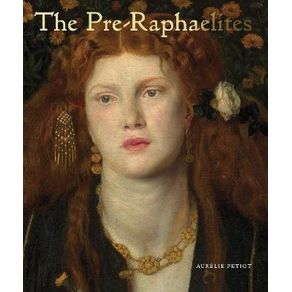Dante Gabriel Rossetti, John Everett Millais, and William Holman Hunt. These were among the young British artists who, in the revolutionary year of 1848, set out to return a lost vibrancy to European art. Calling themselves the Pre-Raphaelite Brotherhood, they and their later followers--including Edward Burne-Jones and William Morris--mounted an artistic front against what they saw as the confining standards of the Victorian art world, and the dehumanizing aspects of the industrial age. Their works drew on Shakespeare, Keats, Tennyson, and medieval lore. They also treated religious and contemporary themes with striking realism, bringing viewers into intimate contact with the subject and causing scandal in their time.
In this authoritative yet highly readable volume, art historian Aurélie Petiot traces Pre-Raphaelitism from its beginnings as a secret brotherhood to its dissemination in multiple strands of British art and beyond. Petiot offers keen analyses of Pre-Raphaelite painting, drawing, and decorative art alike. She gives particular attention to the role of women in the movement, not only as models and muses, but as pioneering artists in their own right, whose work has only begun to receive its proper recognition. Uniquely, the last chapters of the book are devoted to the enduring (yet often underestimated) Pre-Raphaelite influence on the later course of modern art and on our contemporary culture.
More than 300 full-color illustrations reproduce all the great Pre-Raphaelite masterpieces, as well as many fascinating lesser-known works, with all the luminous brilliance and detail for which the Pre-Raphaelites are renowned. This splendid volume is a must-have for any art history lover.

